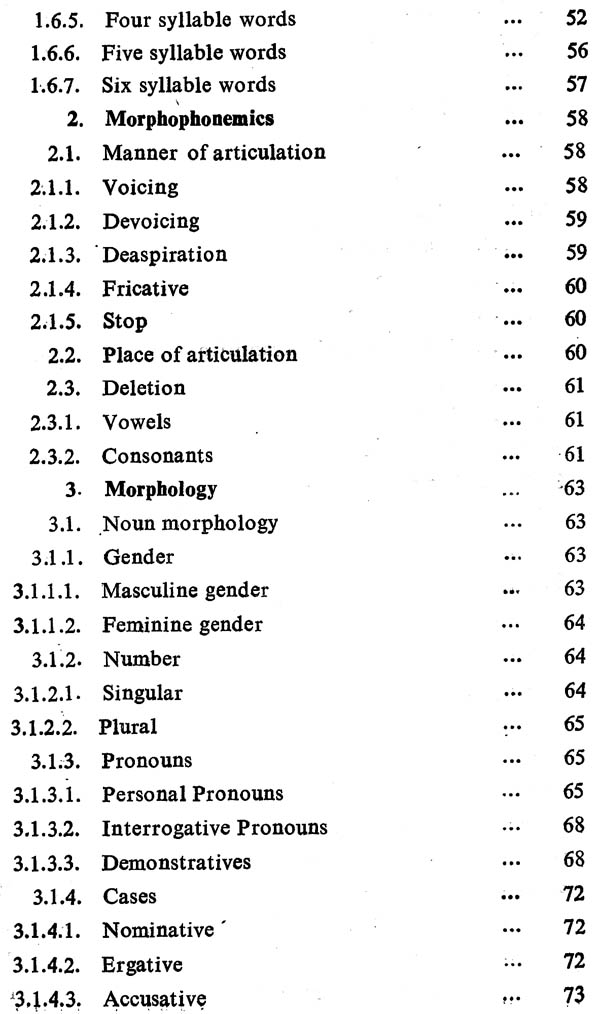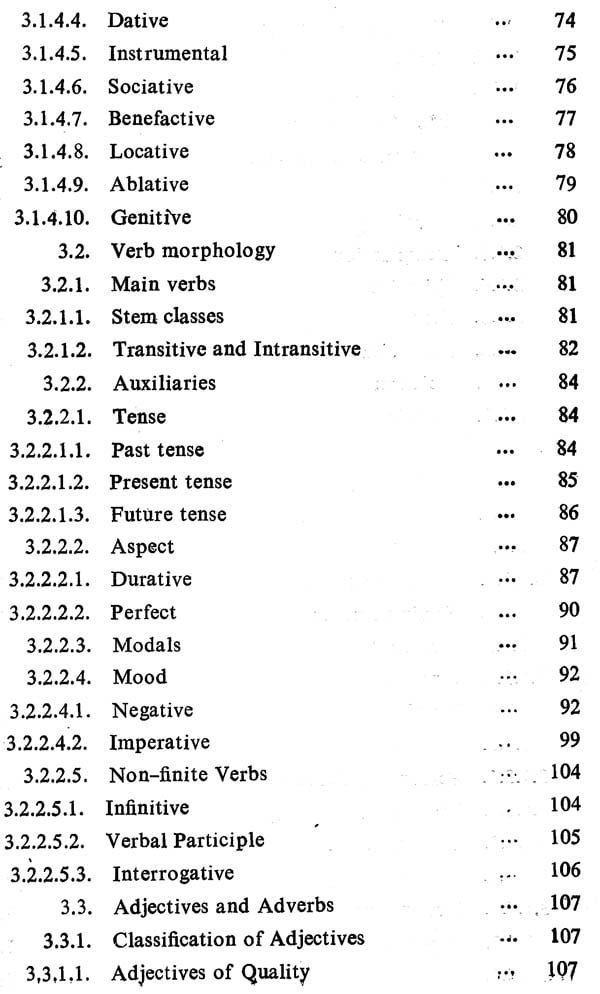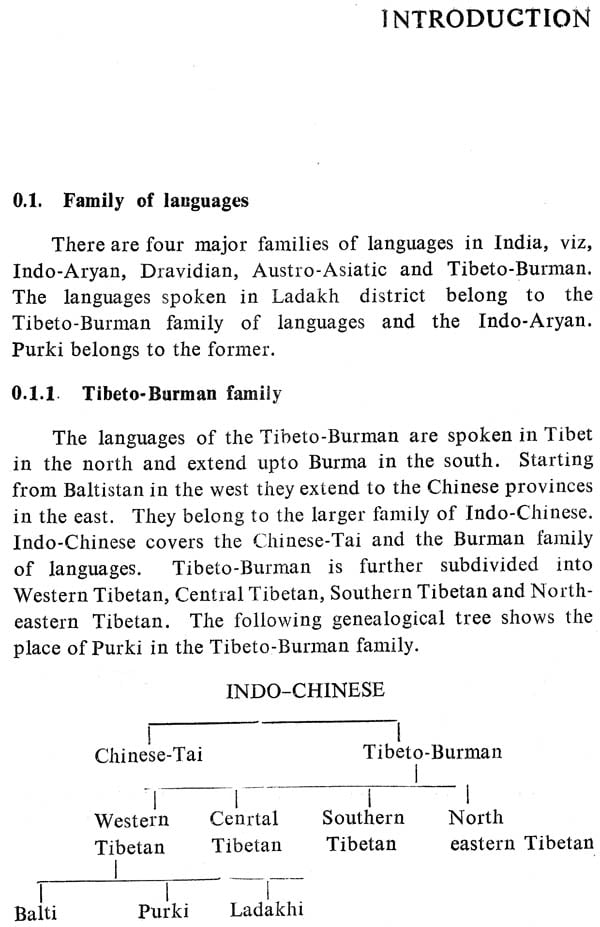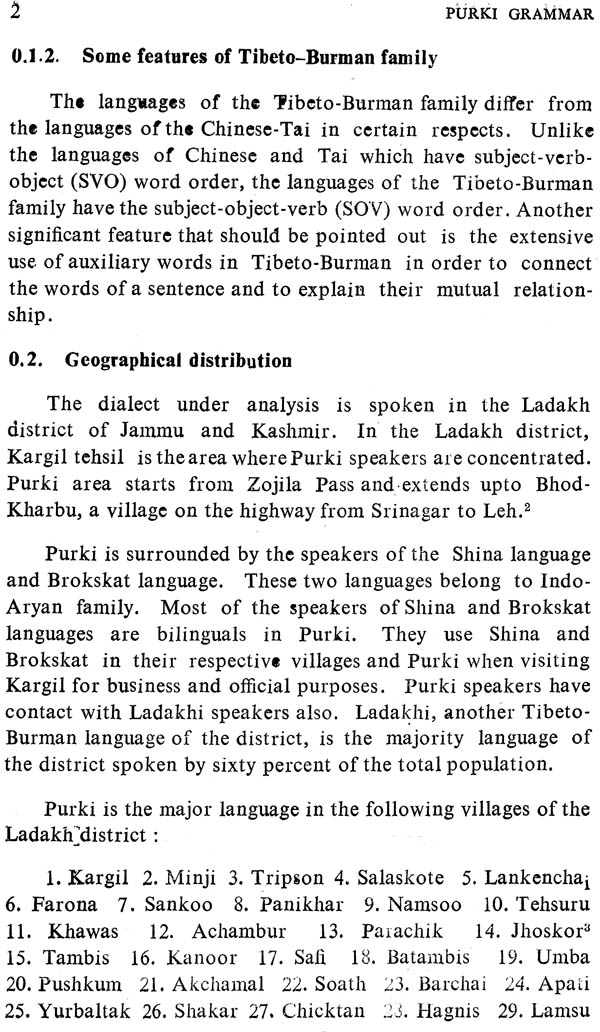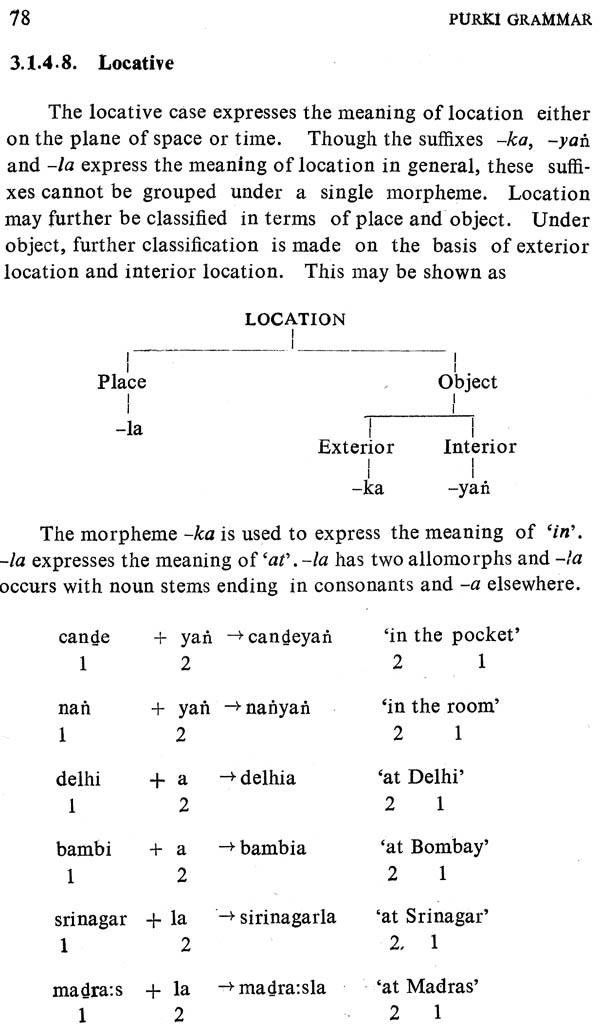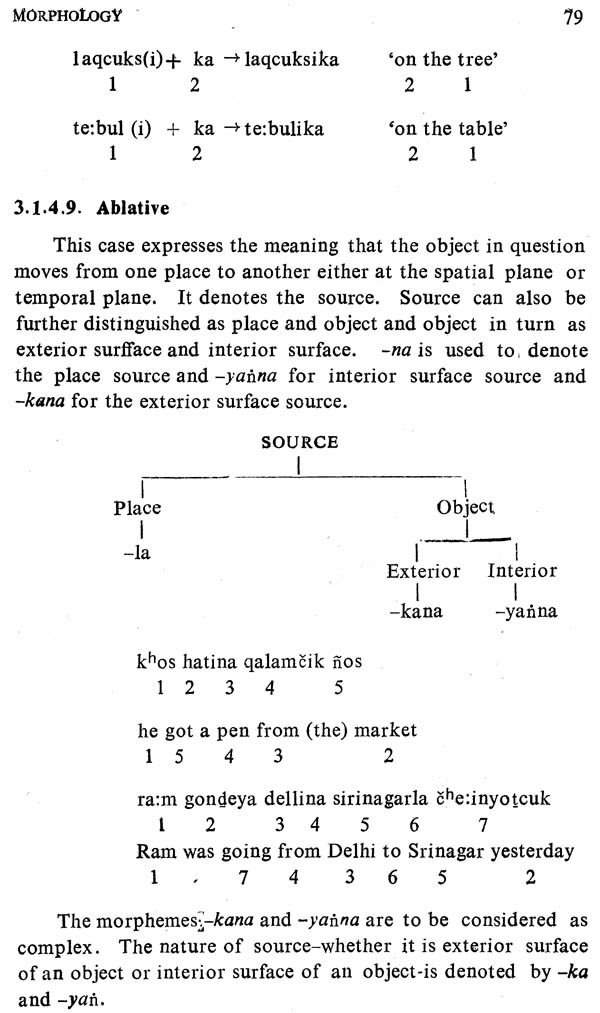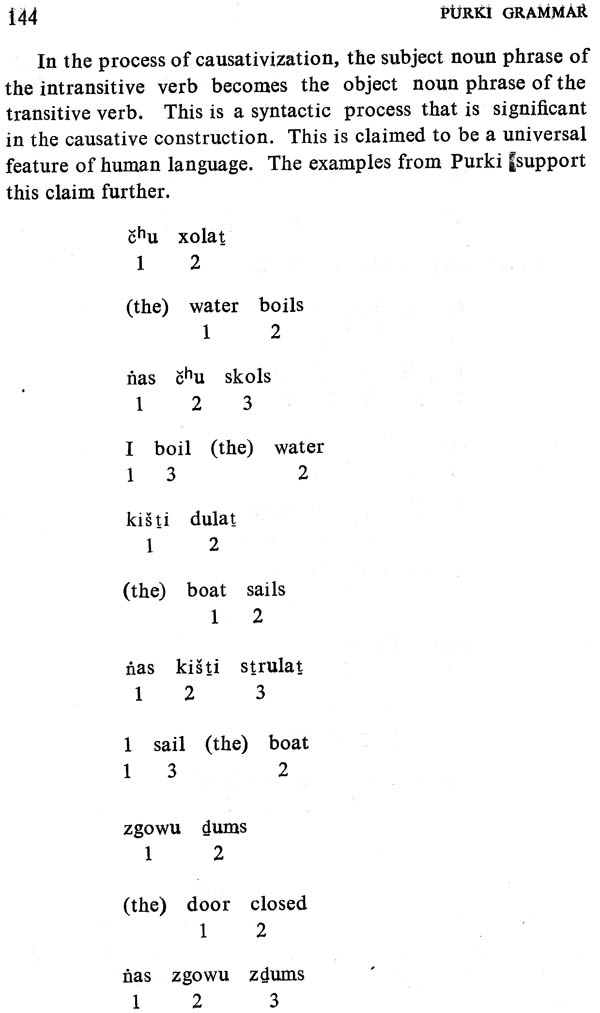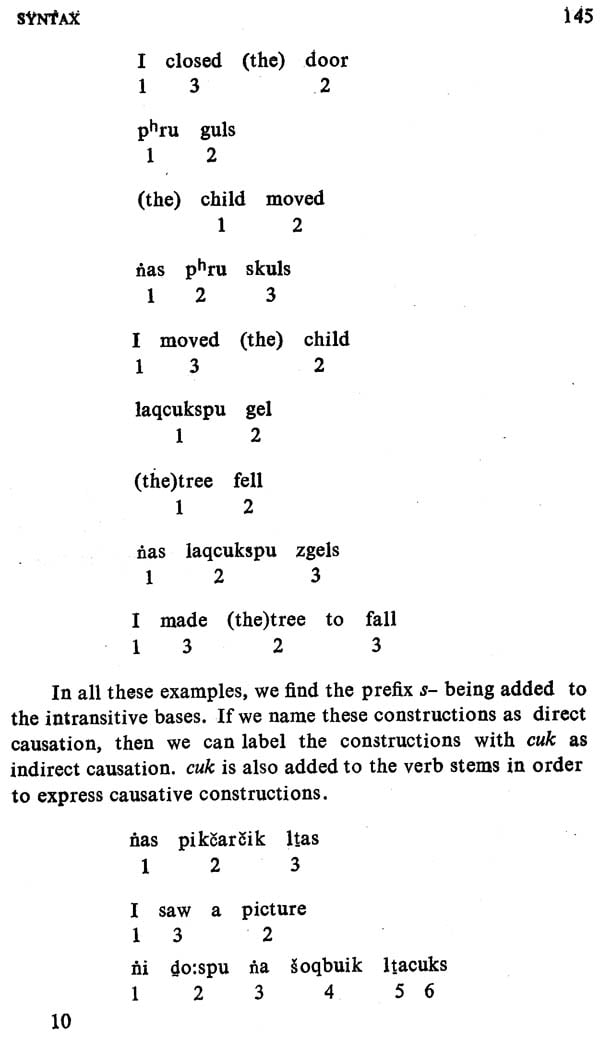
Purki Grammar (An Old and Rare Book)
Book Specification
| Item Code: | NAW187 |
| Author: | K. Rangan |
| Publisher: | Central Institute Of Indian Languages, Mysore |
| Language: | Purki and English |
| Edition: | 1979 |
| Pages: | 178 |
| Cover: | PAPERBACK |
| Other Details | 8.50 X 5.50 inch |
| Weight | 200 gm |
Book Description
The Central Institute of Indian Languages was set up on the 17th July, 1969 with a view to assisting and co-ordinating the development of Indian languages. The Institute was charged with the responsibility of serving as a nucleus to bring together all the research and literary output from the various linguistic streams to a common head and narrowing the gap between basic research and developmental research in the fields of languages and linguistics in India.
The Institute and its four Regional Language Centers are thus engaged in research and teaching which lead te the publication of a wide-ranging variety of materials. Preparation of materials designed for teaching/learning at different levels and suited to specific needs is one of the major areas of interest of the Institute. Basic research relating to :the acquisition of language and study of language in its manifold psycho-social relations constitute another broad range of its interest. The publication will include materials produced by the members of the staff of the Central Institute of Indian Languages and its Regional Language Centres and associated scholars from universities and institutions, both Indian and foreign.
The Central Institute of Indian Languages has initiated the Grammar series in non-literate languages in general and tribal languages in particular presenting a description of every such language in the sub-continent. This is undertaken with a view to producing instructional materials necessary for learning and teaching the language concerned. It is also expected to be of synchronic and diachronic study of languages.
If these materials help solving problems, both individual and corporate, and help in understanding the people speaking the language, then our efforts will be deemed to have been amply rewarded.
The tribal people in India have for long lived in isolation except to be exposed for exploitation. They have not participated to their benefit in the socio-economic development of the country. To come out of their isolation, it is necessary for them to learn the language of the majority people around them and a number of them have done so, But this bridges the communication gap only in one way and the whole burden of building up this bridge is carried by the minority group, It is necessary, however, for developing mutual understanding and good-will, to increase bidirectional communication between the tribal people and the majority of people of the region. For this purpose, the majority people, especially those who come in contract with the tribe people for various reasons such as civil administration, security, social service, trade, etc., should learn their language. The Grammar, which forms part of the package consisting phonetic reader, bi-or tri-lingual dictionary and teaching manual is prepared to help them in their learning of the tribal language.
The organisation of the Grammar is based on grammatical functions rather than on grammatical forms. This will help the new learner to find easily how the different functions, which he already knows and wants to express, are formalised in this language. Since this Grammar is primarily meant for pedagogical Government officials in Ladakh district without whose co-operation the field, work could not have been done smoothly.
I would like to extend my thanks to my friends Mr. Iqbal B.Sc., State Bank of India, Kargil and Mr. Mohammed Shafi M.A, formerly Deputy Superintendent of Police at Leh for the help they extended during my field work.
I must express my thanks to Dr. D. P. Pattanayak,{Director, CIIL, Mysore for the academic atmosphere he keeps and the encouragement he gives.
I am grateful to Dr. E. Annamalai, Deputy Director, CIIL. Mysore for the guidance and supervision of this work and to Dr. H. S. Biligiri, former Deputy Director, CIIL, Mysore who supervised my work in its early stage.
My thanks should go to my friends Mr. N. Ramaswamy, Dr. M. S. Thirumalai, Deputy Director, Dr. B. B. Rajapurohit and Mr. S. Arokianathan who spared their time to discuss some of the problems which I encountered during the writing of this Grammar. I am thankful to Mr. Ananda Raj, CIIL, Mysore for helping me when I prepared the manuscript for the press.
My thanks go to Miss. N. K. Rukmini and Mr. Gopal for the neat typing.
Finally I would like to express my thanks to Mr. H.L. N. Bharati, CIIL, Mysore who saw this Grammar through the press and M/s. Sri Raghavendra Printers, Mysore, for their sincere efforts for a neat and quick printing of this Grammar.


